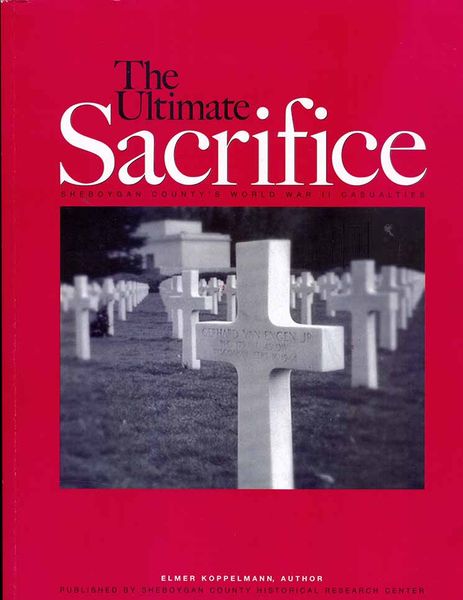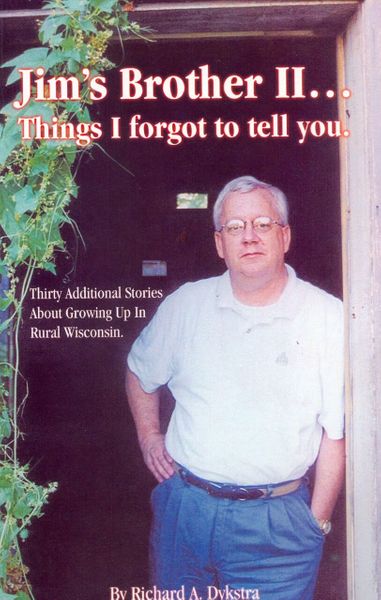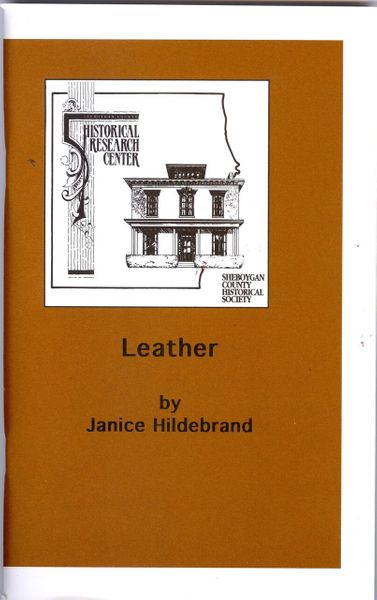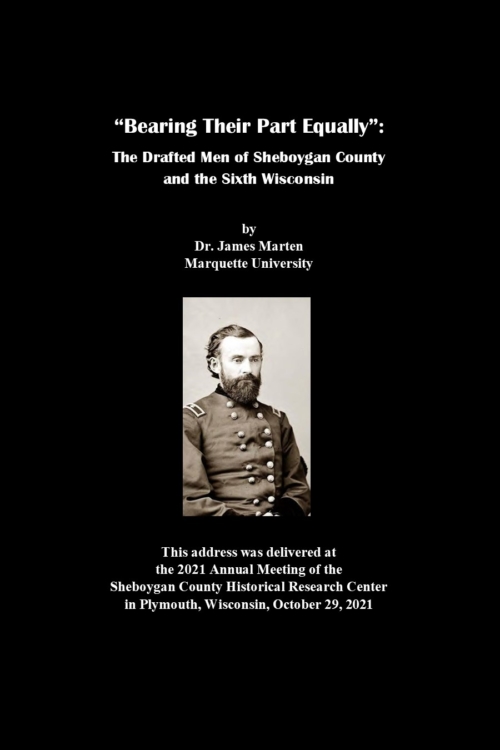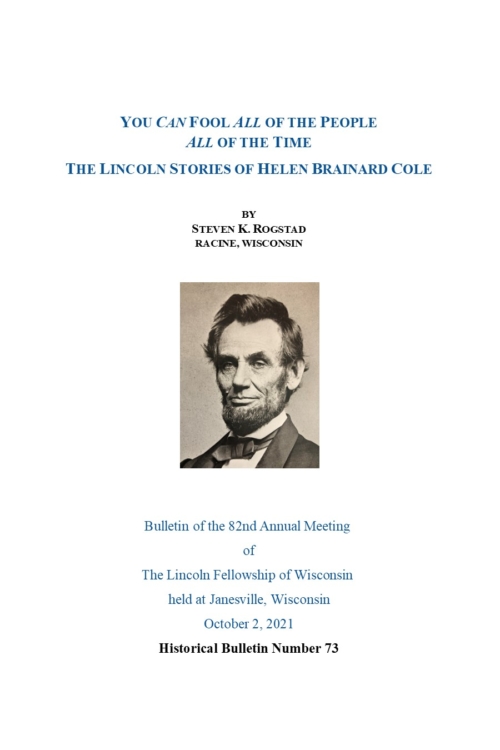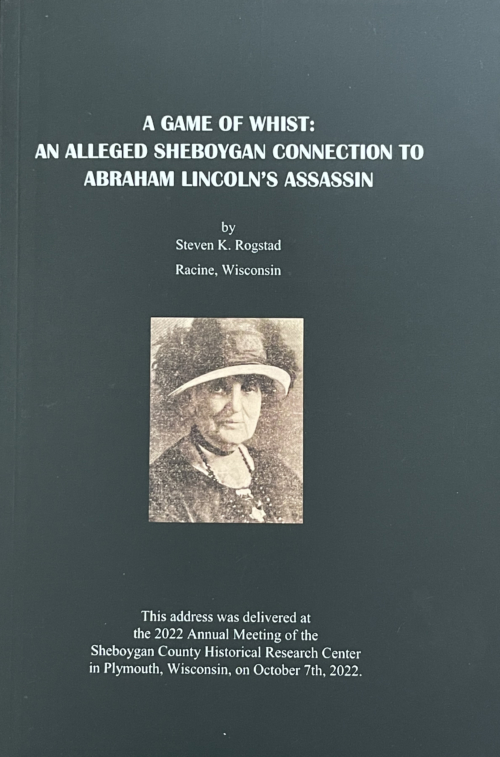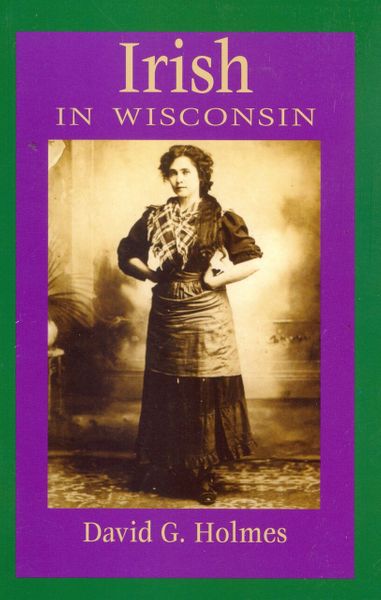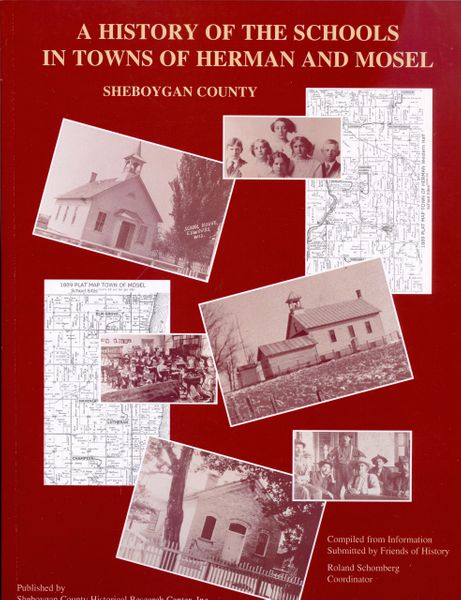-
Sale!By Elmer Koppelmann The citizens of Sheboygan County have always gone above and beyond the call of duty in times of military need; the Second World War was no different. Some 3000 young men and women served during World War II on all fronts and in all capacities from this county alone. Recorded here, after eighteen months of searches and interviews, are vignettes of 234 soldiers- one young woman and 233 young men from the Sheboygan County area who lost their lives. Four others- Joseph J. Archbold, Elmer C. Prahl, Roland Thompson, and Douglas Thornberg are noted as making the ultimate sacrifice, but regrettably, no information was found other than their names.
-
By Emma Hermann Thieme NO LONGER AVAILABLE -- OUT OF PRINT Sophie Hermann Knop was born and raised in Schaefer, Russia, a German-Russian community along the Volga River. In 1923, when she was 18 years old, Sophie traveled to Sheboygan, Wisconsin, where Gottlieb Hermann, had been living since 1912. During their long separation, Sophie endured great difficulties, including the Russian Revolution and the upheavals and famine that followed in its wake. Sophie willingly shared detailed descriptions of her life in Russia. Those “bits and pieces” follow a brief history of German migration to the Volga River area of Russia.
-
By the Howards Grove Area Historical Research Committee The settlement of Haven, located in the Town of Mosel on the western shore of Lake Michigan, Sheboygan County, was formerly known as Seven Mile Creek, not Seven Creeks, as has been recorded in a newspaper account of the area’s history. It got its name from a small creek which flowed into Lake Michigan about seven miles north of Sheboygan. The first post office in Haven was established on July 16, 1897. The first postmaster in Haven was Frederick W. Franzmeier. In 1897 Frederick and Herman Franzmeier built a rooming house, tavern and store next to the railroad tracks. In 1903 the post office was established in that building.
-
Sale!By Richard A. Dykstra Here are thirty additional stories about growing up in rural Sheboygan County. Two favorite chapters are “The Airport” and “The Ice Box.” In the first you will appreciate the gullibility of children and in the second you will want to check Dykstra’s nose to see, if like Pinocchio, it has grown a foot or two. Besides the silly and nonsensical stories there are those with a much deeper meaning as in “Revisiting the Gift,” “Three Conversations with Dad” and “Grandma’s Quiet Life.” Dykstra's appreciation of family shines through the pages of all of his books.
-
By Janice Hildebrand In Sheboygan County there was a lively trade with the Indians for deer hides and other animal skins. Barter with the Indians brought the first traders to the county in the early 1800s. The tanneries of the county were an offshoot of the fur-trading days and were among the first clothing-related businesses to get started in Sheboygan County. Everything from shoes to gloves to harnesses were made of leather. Follow the history of the leather business in the county.
-
Sale!By Mary Jane Gruett Twelve year old Derk Van Vliet began the adventure of a lifetime in Holland in 1847. He left his home, his friends and his faithful dog, Bello, to begin a new life in America. But, disaster struck as his ship came within sight of its destination, Sheboygan, Wisconsin. The Phoenix, a Great Lakes steamer, normally delivered immigrants to their new homes. But, on Derk’s voyage, the doomed Phoenix, was part of an historic disaster which would cause Derk to question everything about life. He would have to forge ahead to find a new life and search to find courage deep within himself.
-
Sale!By Edwin L. Fisher Because of the prominence and close connection by virtue of the Sheboygan County Historical Society occupation of his 1852 mansion, it was thought more should be known about Judge David Taylor and his family. As a Wisconsin State Supreme Court Justice, he was one of the most important early settlers in Sheboygan, Wisconsin. As research proceeded so much interesting family-related information became available that the story expanded.
-
Sale!This publication is a chronological account of the sister city relationship between Sheboygan, a city in the state of Wisconsin, and Esslingen am Neckar of Germany. These articles span the years 1967 to 2017. The stories are told by actual headlines, story excerpts, photographs, and informational pieces gathered through articles in the Sheboygan Press, publications in the archives of the Sheboygan County Historical Research Center and Mead Public Library. The articles selected are meant to include a brief history and highlights of special visits and envoys. It is impossible to include everything. Many photos were available, but individuals and dates were not identified so they were not chosen. In a world that began with cablegrams, western union, letters, then phone and fax, communication evolved with the technology of cell phones, emails, the internet and FaceTime. In the beginning, travelers’ postcards and letters often arrived after they returned home. The bulk of the written material was found before all of this new technology replaced the newspaper stories. Some years there was more material than others. During the 1990s and beyond information was in the hands of individuals, not printed publications.
-
By David Holmes The Irish have a rich and long history in Wisconsin, dating back to the 19th century. Immigrants quickly formed communities in Beloit, Fond du Lac, and Sturgeon Bay, as well as in rural Trempeauleau County. They worked at day labor, railroad construction, lumbering, fishing, and of course farming. Some of those early Irish communities have disappeared; others have experienced succeeding generations of Irish Americans settling in these Wisconsin cities and small towns and influencing them with their old country charm.
-
An entertaining compilation of great newspaper articles following the history of the railroad in Sheboygan County. Some are humorous, some are serious, and some are downright shocking. Great reading for the railroad enthusiast and amateur alike. 2016 Reprint.
-
Sale!
By Roland Schomberg
Originally published 1994, this 2008 update provides the reader with a look at the schools in the towns of Herman and Mosel from the town’s earliest history. Schools covered: Millersville, Howards Grove, Green Bay Road, Washington, Franklin, Pinehurst, Schwartzwald, Elm Grove, Haven, Champion, and Lakeview.

